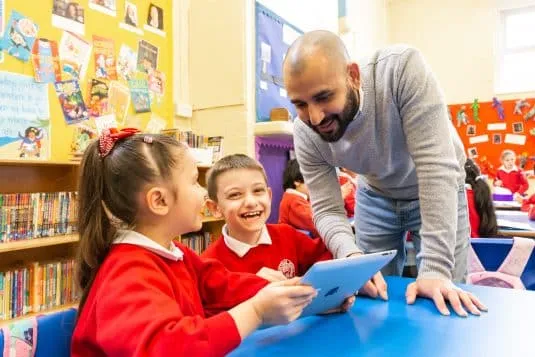June 21, 2023
In collaboration with the Education Policy Institute (EPI), we are publishing an important report today that reveals the extent of the ongoing impact of the pandemic. The report also points out where attainment gaps appear and looks at how quickly they can be recovered:
Key headlines from the report, which is available to download here, show that:
- Mathematics outcomes for primary aged pupils remain below pre-pandemic levels, which amounts to just under 1.5 months’ worth of learning by the end of the Autumn term. Outcomes for younger year groups are even further behind pre-pandemic norms.
- More positively, average outcomes in reading have largely recovered in primary schools, which is consistent with results from national assessments last summer.
- The gap in reading outcomes between primaries with the highest levels of socioeconomic disadvantage and those with the lowest is still around 6% wider than at the start of the pandemic. This suggests that pupils in disadvantaged areas have suffered bigger adverse learning effects than those in more affluent areas.
For almost two years, we worked with the Education Policy Institute (EPI), on behalf of the Department for Education, to examine the impact of the pandemic on student outcomes in reading and maths. Thanks to the millions of Star Assessments administered every year, we were able to complete this important task without increasing teacher workload or requiring students to complete additional tests. The findings summarised here revealed an interesting picture, with recovery – especially in reading – occurring at certain points of the year but falling back in others.
Although that original research project was extended to incorporate Autumn 1 in 2021-22, it was clear that there was still much work to be done – not only in terms of the ongoing impact of the pandemic, but also what we can learn about where attainment gaps appear, and how quickly they can be recovered. As a result, we took the decision last summer to commission EPI to continue this important work across a series of reports for the benefit of teachers and school leaders across the country.
Later reports in this series will provide further detailed estimates of learning loss and recovery, including regional breakdowns, and are designed to help target future support to where it is most needed – but what can we learn from these initial findings?
Well, this research is only made possible because of the versatility and reliability of Star Assessments for reading and maths – computer-adaptive tests that can be administered in as little as 20 minutes, as often as required. Not only do Star Assessments make it easy to identify student attainment and achievement and monitor progress over time, they also offer a wealth of screening and diagnostic reports and include Learning Progressions and Focus Skills aligned to the national curriculum. In the coming weeks and months, we’ll detail how, when properly implemented, these can help accelerate learning recovery by identifying the skills a student needs to master in order to meet end of year expectations.
In fact, we will be asking questions of leading education groups and the sector at large on the value of administering formative assessment at scale – identifying the times of the year when testing can provide the most valuable information on students’ current ability and future performance. Turning these insights into personalised learning for every student helps to accelerate learning for all.
In a recent guest post, the Headteacher at The Raglan Schools, Martin Kelsey, explained the power of assessment and personalised practice to improve student outcomes in reading and mathematics. We asked for his thoughts on this research, what teachers can take from it, and steps that can be taken in response to the findings:
“This report contributes to our knowledge and understanding of how the last few years have affected schools in different ways. It is important to have the research but as schools were affected in different ways, we have to consider the research in our own context.
Firstly, we can take confidence that Reading levels are almost back to pre-pandemic levels and continue to focus on closing gaps with Mathematics. Schools that use Star Assessments can compare how they are doing against the national averages for different year groups, so they can tailor actions and next steps accordingly. The focus will differ for each school and in some cases different cohorts within. Those schools in areas of greater deprivation have a bigger challenge as the gap has widened compared to pre-pandemic levels.
At The Raglan Schools, we will continue to track the progress of our cohorts, comparing our data regularly with the national averages. Curriculum and pedagogy remain key priorities going forward alongside a strong personal development and enrichment programme so that children continue to enjoy and thrive in their learning. Staff professional development remains important so that we can continue to develop and grow as teachers and leaders.”
At Renaissance, we believe that personalised learning is only possible when you can deliver personalised teaching. There’s no such thing as an average student. All children are different, and no two children should be taught in exactly the same way. We know that technology can unlock a more effective learning experience. One where we can ensure that students get the personalised teaching they need to thrive.
Our instructional ecosystem gives teachers and school leaders the ability to see every student so they can help them fulfil their potential. Our assessment tools, which also now include GL Assessment, give a complete, holistic picture of what students are excelling at and struggling with – and then equips teachers with engaging instructional materials to help all students succeed.
